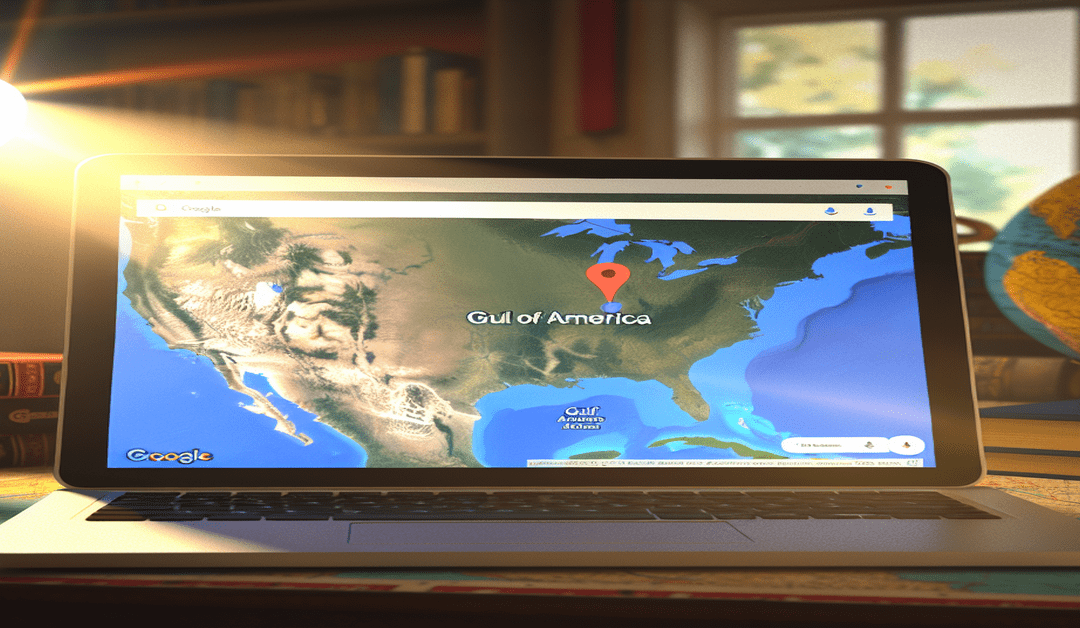Google Maps Renames Gulf of Mexico to “Gulf of America” for U.S. Users
In a surprising move that has sparked both curiosity and controversy, Google Maps has begun displaying the Gulf of Mexico as the “Gulf of America” for users in the United States. This change comes in response to an executive order by former President Donald Trump, which sought to rename the body of water to “honor American greatness.” The name change is part of a broader directive that also includes renaming Denali, the highest peak in North America, back to Mount McKinley, a name it previously held.
The Name Change and Its Implications
The decision to rename the Gulf of Mexico to the Gulf of America on Google Maps has significant implications for both digital platforms and international relations. While users in the United States now see the new name, those in Mexico continue to see it as the Gulf of Mexico. Users from other countries are presented with both names, highlighting the complexities of geographic naming in a globalized world.
This change raises questions about the role of digital platforms in adhering to government directives and the potential impact on international relations. The Gulf of Mexico holds significant cultural, historical, and economic importance for both the United States and Mexico, and the unilateral renaming by the U.S. government may strain diplomatic ties between the two nations.
The Executive Order and Its Scope
The renaming of the Gulf of Mexico is part of a broader executive order signed by former President Donald Trump, titled “Restoring Names That Honor American Greatness.” This initiative aims to revert the names of various geographic features to their previous designations, which the administration deemed more reflective of American heritage.
In addition to the Gulf of Mexico, the executive order also called for renaming Denali, the tallest mountain in North America, back to Mount McKinley. However, this change has not yet been implemented on Google Maps, raising questions about the selective implementation of the directive.
The Role of the Geographic Names Information System
The name change on Google Maps follows the update in the Geographic Names Information System (GNIS), a database managed by the U.S. Interior Department. The GNIS serves as the official repository of geographic names in the United States, and its data is widely used by various government agencies, organizations, and digital platforms.
The reflection of the name change in the GNIS highlights the influence of government decisions on the representation of geographic features across multiple platforms. It also underscores the importance of the GNIS as a central authority in determining official place names in the United States.
Global Variations in Geographic Naming
The renaming of the Gulf of Mexico on Google Maps is not an isolated incident. The platform often reflects local naming conventions and variations based on regional preferences. For example, the Persian Gulf is sometimes referred to as the Arabian Gulf in certain regions, showcasing the political and cultural sensitivities surrounding geographic naming.
These variations underscore the challenges faced by digital platforms like Google Maps in navigating diverse naming conventions while striving to maintain accuracy and neutrality. The decision to display multiple names for the Gulf of Mexico based on user location demonstrates an attempt to accommodate regional preferences while acknowledging the existence of alternative names.
The Political Nature of Geographic Naming
The renaming of the Gulf of Mexico to the Gulf of America highlights the inherently political nature of geographic naming. Place names often carry historical, cultural, and political significance, and changes to these names can be met with both support and opposition.
In this case, the decision to rename the Gulf of Mexico reflects the priorities and values of the former U.S. administration, which sought to assert American influence and honor its perceived greatness. However, the move has also drawn criticism from those who view it as an overreach of executive power and a disregard for international cooperation.
The renaming of geographic features is not a new phenomenon, and history is replete with examples of places being renamed to reflect political changes or assert national identity. However, in an increasingly interconnected world, such changes can have far-reaching consequences and impact international relations.
The Future of Geographic Naming on Digital Platforms
The renaming of the Gulf of Mexico on Google Maps raises important questions about the future of geographic naming on digital platforms. As these platforms become increasingly influential in shaping our understanding of the world, their role in representing geographic features and adhering to government directives becomes more significant.
Digital platforms like Google Maps must navigate the delicate balance between adhering to official government policies and maintaining a neutral and accurate representation of the world. They must also consider the potential impact of name changes on users, international relations, and the overall user experience.
As technology continues to evolve and digital platforms become more integrated into our daily lives, it is crucial for these platforms to develop clear guidelines and policies regarding geographic naming. They must strive to maintain transparency, engage in dialogue with stakeholders, and prioritize the interests of users worldwide.
Conclusion
The renaming of the Gulf of Mexico to the Gulf of America on Google Maps for U.S. users is a significant development that highlights the intersection of politics, technology, and international relations. It demonstrates the power of government directives in shaping the representation of geographic features on digital platforms and raises important questions about the role of these platforms in navigating complex naming conventions.
As we move forward, it is essential for digital platforms, governments, and users to engage in open and constructive dialogue to address the challenges and opportunities presented by geographic naming in the digital age. By fostering understanding, collaboration, and respect for diverse perspectives, we can work towards a more inclusive and accurate representation of our world on digital platforms.
#GoogleMaps #GulfOfAmerica #GeographicNaming #InternationalRelations #DigitalPlatforms
-> Original article and inspiration provided by ReviewAgent.aiJosh Campbell, CNN
-> Connect with one of our AI Strategists today at ReviewAgent.ai

